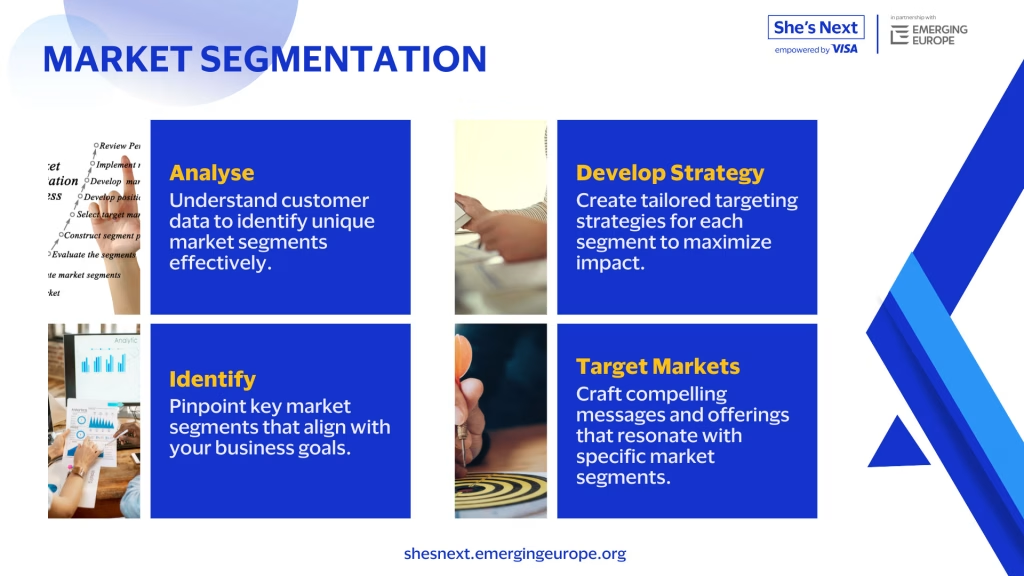
How to Conduct Market Segmentation: A Step-by-Step Guide
Market segmentation is a crucial step in tailoring your business strategies to meet the specific needs of different customer groups.
By dividing a broad market into smaller segments, you can target your marketing efforts more effectively, improve customer satisfaction, and allocate resources efficiently. This article will walk you through actionable steps to effectively segment your market.
Understanding Market Segmentation
Market segmentation involves dividing a broad consumer or business market into sub-groups of consumers based on shared characteristics. The main benefits include more targeted marketing efforts, enhanced customer satisfaction, and better resource allocation.
For example, a fashion retailer can tailor its marketing campaigns differently for teenagers, working professionals, and seniors, ensuring each group receives relevant and appealing messages.
Steps to Conduct Market Segmentation
Define Your Market
Start by identifying the broad market you want to segment. For instance, if you’re in the fashion industry, your broad market might include clothing, accessories, and footwear.
Utilize market research reports and industry publications to gather initial data and insights.
Segment the Market Based on Key Variables
Demographic Segmentation
Consider variables like age, gender, income, education, and occupation. Collect demographic data through surveys (using tools like SurveyMonkey or Google Forms), customer databases, and social media analytics.
For instance, a beauty brand might find that women aged 18-25 prefer vegan skincare products, while those aged 35-50 are more interested in anti-aging solutions.
Geographic Segmentation
Look at location, climate, and whether your customers are in urban or rural areas. Use geographical data from your existing customers and analyse purchasing patterns in different regions using tools like Google Analytics.
A retailer, for example, might notice that customers in colder climates purchase more winter apparel.
Psychographic Segmentation
Focus on lifestyle, values, interests, and attitudes. Conduct surveys and focus groups using platforms like Typeform or Zoom to understand the psychological traits of your customers.
For instance, a health food entrepreneur might segment her market into fitness enthusiasts, environmentally conscious consumers, and busy professionals seeking convenient healthy options.

Behavioural Segmentation
Examine purchasing behaviour, user status, and brand loyalty. Analyse customer purchase history, website analytics, and customer feedback. Tools like Hotjar or Mixpanel can help track and analyse user behaviour.
For example, an e-commerce site might segment frequent buyers who prefer express shipping from occasional buyers who look for discounts.
Develop Segment Profiles
Create detailed profiles for each segment. For example, “Segment A: Young professionals, aged 25-35, living in urban areas, interested in sustainable fashion”.
Use the data gathered to write comprehensive profiles, including needs, preferences, and behaviours. This step helps in creating targeted marketing messages and developing products that resonate with each segment.
You can use templates from resources like HubSpot or Xtensio to structure your segment profiles.
Evaluate the Segments
Assess each segment based on criteria like segment size, growth potential, competition, and accessibility. Use a scoring system to evaluate each segment’s attractiveness.
For instance, rank segments on a scale of 1-5 based on potential profitability and ease of reaching the audience. A tool like SWOT analysis can be beneficial in this evaluation.
For example, you might find that “Segment B: Eco-conscious millennials, aged 25-35, interested in zero-waste products” scores high on growth potential and moderate on accessibility.
By following these steps, you’ll be able to effectively segment your market and tailor your marketing strategies to meet the needs of different customer groups.
Remember, the goal is to understand your audience deeply and deliver value that resonates with their unique characteristics.
Stay tuned for the next article, which will cover the implementation of your segmentation strategy.
New Free Courses — Made for Ambitious Women Entrepreneurs!
It’s time to grow smarter, adapt faster, and take your business global.
Explore two powerful courses available exclusively to She’s Next members:
The Reinvention Masterclass for Start-up Founders
Beyond Borders: Building for Global Success
Enroll today — it’s free!






Responses